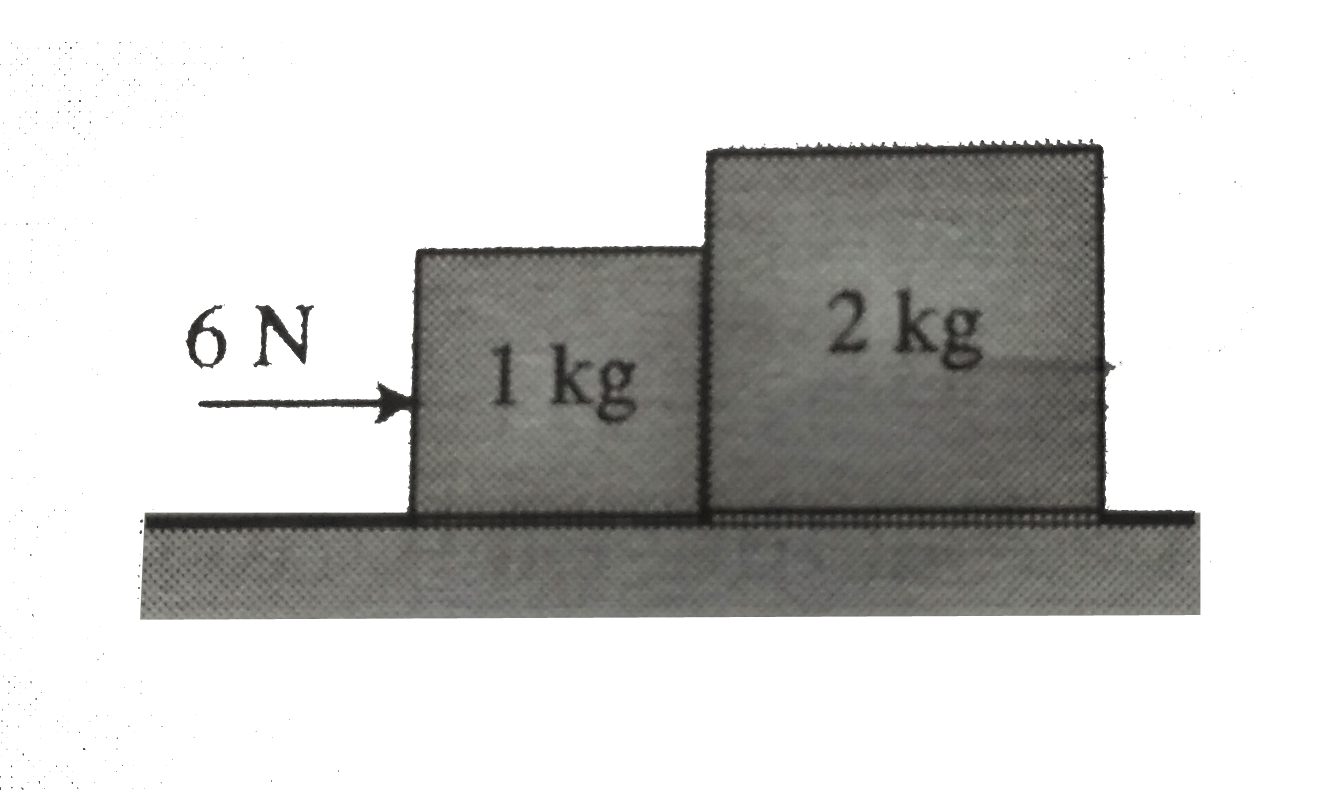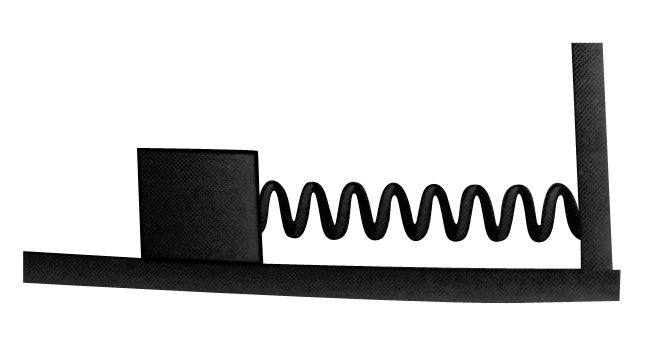An elastic spring is compressed between two blocks of masses 1kg and 2kg resting on a smooth horizontal table as shown. If the spring has 12J of energy and suddenly released, the velocity with which the larger block of 2kg moves will be
 .
.
2m/s
4m/s
1m/s
8m/s
The correct Answer is:A
12Kx2=KE1+KE2 and m1v1=m2v2.
Topper's Solved these Questions
- WORK POWER AND ENERGYBOOK - NARAYNACHAPTER - WORK POWER AND ENERGYEXERCISE - Level- III (C.W)
50 Videos
- WORK POWER AND ENERGYBOOK - NARAYNACHAPTER - WORK POWER AND ENERGYEXERCISE - NCERT (Based Questions)
45 Videos
- WORK POWER AND ENERGYBOOK - NARAYNACHAPTER - WORK POWER AND ENERGYEXERCISE - Level- I (C.W)
60 Videos
- WORK , ENERGY & POWER BOOK - NARAYNACHAPTER - WORK , ENERGY & POWER EXERCISE - EXERCISE IV
43 Videos
Similar Questions
Two blocks of masses m and m' are connected by a light spring on a horizontal frictionless table . The spring is compressed and then released . Find the ratio of acceleration of masses .
View SolutionThree block of masses 1kg,4kg and 2kg are placed on a smooth horizontal plane as shown in figure. Find
(a) the acceleration of the system,
(b) the normal force between 1kg block and 4kg block,
( c) the net force on 2kg block

View Solution
Knowledge Check
Two blocks of masses 1 kg and 2 kg are placed in contact on a smooth horizontal surface as shown in fig. A horizontal force of 6N is applied on a 1-kg block. Find the force of interaction of the blocks.

A4NB5NC10NDnoneAn ideal spring is permanently connected between two blocks of masses M and m. The blocks-spring system can move over a smooth horizontal table along a straight line along the length of the spring as shown in Fig.The blocks are brought nearer to compress the spring and then released. In the subsequent motion,
 Ainitially they move in opposite directions with velocities inversely proportional to their massesBthe ratio of their velocities remains constantClinear momentum and energy of the system remain conservedDthe two blocks will Oscillate about their centre of mass which remains stationary
Ainitially they move in opposite directions with velocities inversely proportional to their massesBthe ratio of their velocities remains constantClinear momentum and energy of the system remain conservedDthe two blocks will Oscillate about their centre of mass which remains stationaryA light spring of force constant 'K' is held between two blocks of masses 'm' and '2m'. The two blocks and the spring system rests on a smooth horizontal floor. Now th blocks are moved towards each other compressing the springs by 'x' and suddenly released. The relative velocity between the blocks when the spring attains its natural length will be
A(√3K2m)xB(√2K3m)xC(√K3m)xD(√K2m)x
A spring of force constant k = 300 N/m connects two blocks having masses 2 kg and 3kg lying on a smooth horizontal plane. If the spring block system is released from a stretched position find the number of complete oscillations in 1 minute. Take π=√10
View SolutionA spring of force constant k = 300 N/m connects two blocks having masses 2 kg and 3kg lying on a smooth horizontal plane. If the spring block system is released from a stretched position find the number of complete oscillations in 1 minute. Take π=√10
View SolutionA spring is connected between two blocks as shown in the diagram. Initially the blocks are held stationary and suddenly they are released. Find the ratio of maximum kinetic energy with spring compressed the block of mass m to that of mass 2m.

View Solution
An ideal spring is compressed and placed horizontally between a vertical fixed wall and a block free to slide over a smooth horizontal table to as shown in the figure. The system is released from rest. The graph which represents the relation between the magnitude of acceleration a of the block and the distance x travelled by it (as long as the spring is compressed) is
View SolutionTwo blocks of masses 1kg and 3kg are moving with velocities 2m/s and 1m/s , respectively , as shown. If the spring constant is 75N/m , the maximum compression of the spring is

View Solution
